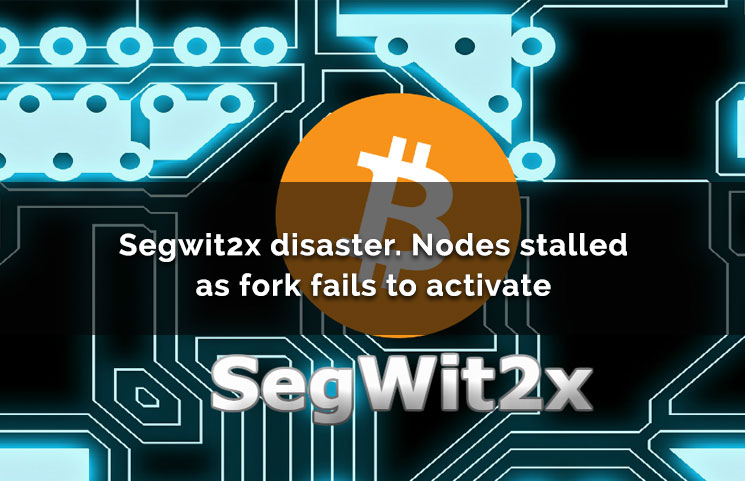Cryptocurrency
Bitcoin SegWit2x Disaster Yet Again As Nodes Stalled & Fork Fails To Go

Back in May, as part of two proposed upgrades to the Bitcoin network ratified by the Bitcoin Scaling Agreement in New York, Segwit2x was slated to be implemented approximately 90 days after the soft-fork activation of Segregated Witnesses in the Bitcoin blockchain. From being a hard fork with upto 80% alleged consensus, support for the proposal steadily began to unravel.
It was ultimately deemed that going ahead with the proposal would divide the community and therefore, to all intents and purposes, was abandoned. Mike Belshe, CEO of BitGo announced in a statement,
Our goal has always been a smooth upgrade for Bitcoin. Although we strongly believe in the need for a larger block size, there is something we believe is even more important: keeping the community together. Unfortunately, it is clear that we have not built sufficient consensus for a clean blocksize upgrade at this time. Continuing on the current path could divide the community and be a setback to Bitcoin’s growth. This was never the goal of Segwit2x.
However, two days later, an anonymous developer named Bitpico made a claim that he controlled 30% of the Bitcoin network hashrate and the fork was still very much on the cards, “Backing down the difficulty right now is a strategy. Wonder why 30% network hash-rate disappeared? It’s ours; the miners that will continue what is set in motion. A handful of humans cannot stop what they have no control over.”
True to the claim, Segwit2x was all set to activate on Friday, November 17th at block height 494784. Coinbase even published an update on Thursday informing their users about potential post-fork scenarios. What went wrong? The 95 residual nodes in the Segwit2x network stalled at block height 494,782, failing to activate the fork.
According to Bitcoin core developer from Chaincode labs, John Newberry, the original lead developer of Segwit2x, Jeff Garzik had made an off-by-one error in the miner activation code. Various other bugs have also been reported in the btc1 code.
When the error was pointed out to Jeff, he immediately created a patch and released it without any review. Jeff also defended the mistake stating that the nodes were operating as intended and the 494784th block from block height 0 was 494783, even though the block number 494784 had been ubiquitously reported in every Segwit2x press release.
John Newberry added further, “no one should run btc1 code. It is untested, unreviewed, buggy and can only serve to disrupt and confuse the Bitcoin network.”
